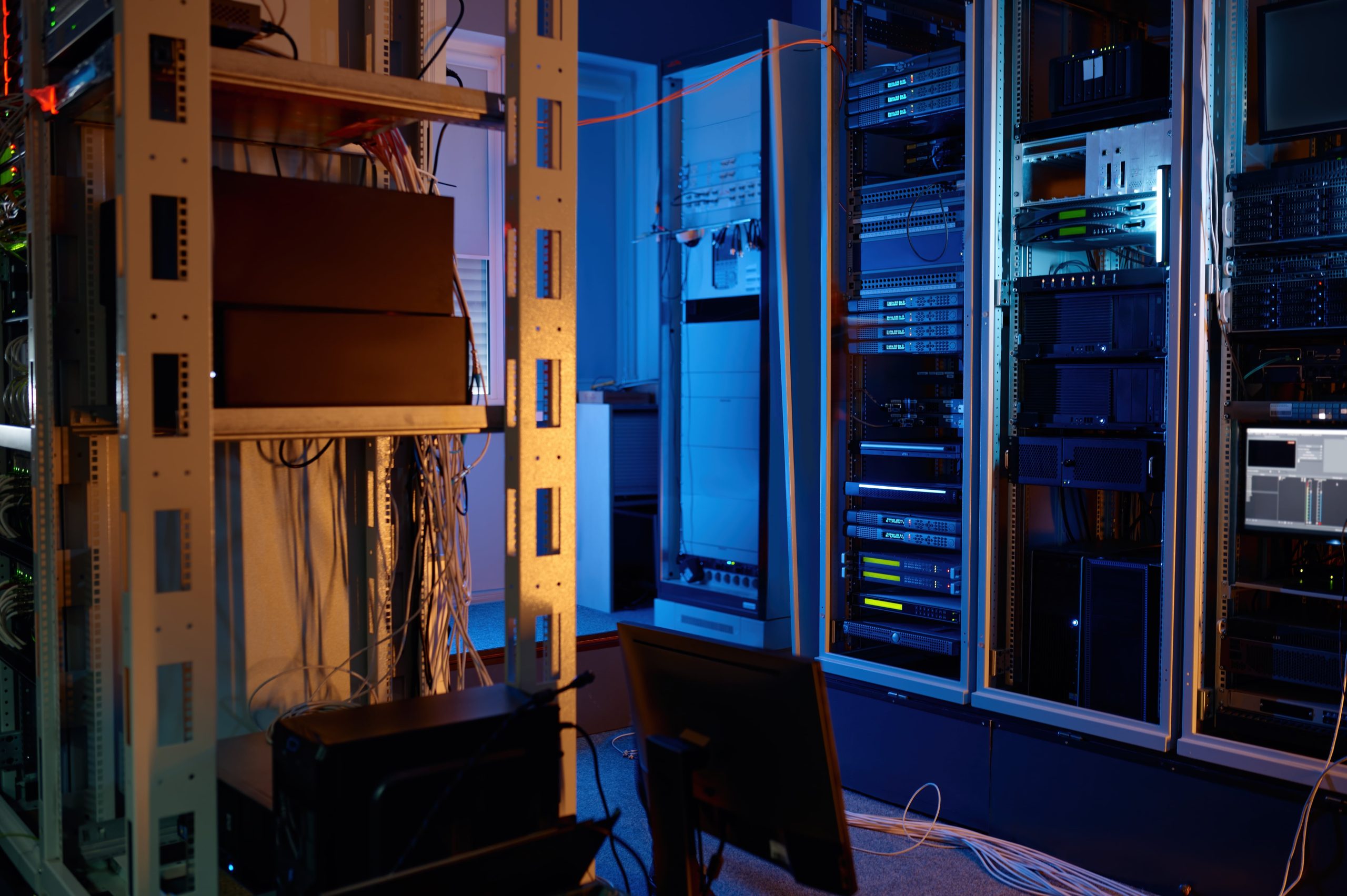A business’s success often depends on the speed and reliability of its digital infrastructure. From processing payments to communicating with clients, every operation relies on a stable network. While many focus on the devices they use, the true backbone of a powerful network is often unseen, hidden within walls and ceilings. This is where professional Structured Cabling Solutions come into play, creating an organized, efficient, and scalable foundation for all your business’s data and communication needs.
An unplanned, chaotic network setup with tangled wires and mismatched components can lead to slow speeds, frequent downtime, and significant troubleshooting headaches. In contrast, a structured system provides a streamlined and future-proof framework. It supports everything from your computer network and phone systems to security cameras and access control. This guide will explore what structured cabling is, why it’s essential for modern businesses, and how it compares to other connectivity options.
What Is Structured Cabling?
At its core, structured cabling is a comprehensive system of cables and hardware that creates a standardized telecommunications infrastructure. Think of it as the central nervous system of your building. It’s designed to manage a wide range of data needs in an organized way. Instead of running separate, dedicated cables for every new device or service (a method known as point-to-point cabling), a structured system uses a series of patch panels and trunks.
This approach involves creating a main distribution area (MDA) where all connections originate. From there, cables run to various intermediate distribution areas (IDAs) or directly to wall outlets and endpoints. This design allows for quick and easy changes. If you need to move a desk, add a new employee, or upgrade a piece of hardware, you simply reroute the connection at the patch panel instead of running entirely new wires. This modularity is what makes structured cabling so powerful and cost-effective over the long term.
A complete structured cabling system typically includes six key subsystems:
- Entrance Facilities: Where the external service provider’s network enters the building.
- Equipment Room: A centralized space that houses the main networking equipment, like servers and routers.
- Backbone Cabling: The “data highway” that connects entrance facilities, equipment rooms, and telecommunications rooms.
- Telecommunications Room (or Enclosure): Houses the connection points between the backbone and horizontal cabling.
- Horizontal Cabling: The wiring that runs from the telecommunications room to individual outlets in the work area.
- Work Area: The space containing the final connection points (outlets, jacks) for end-user devices like computers and phones.
The Business Case for Structured Cabling
Investing in high-quality Structured Cabling Solutions is a strategic decision that pays dividends in performance, reliability, and scalability. Businesses that rely on a disorganized mess of wires often face unpredictable network failures and spend far more time and money on maintenance.
One of the biggest advantages is simplified management. With a clean, labeled, and organized system, IT staff can identify and resolve issues much faster. This drastically reduces downtime, which can be incredibly costly for any business. Furthermore, a well-designed system is built to last. It can support multiple generations of hardware, meaning you won’t need to overhaul your entire infrastructure every time you upgrade your technology.
Scalability is another crucial benefit. As your business grows, so do your data demands. A structured system allows you to add new users and devices with minimal disruption. The organized framework supports a variety of applications, including Voice over IP (VoIP), video conferencing, and large data transfers, without compromising on speed or quality. For companies planning for the future, this adaptability is non-negotiable.
Applications and Real-World Uses
Structured cabling is the unsung hero behind many critical business operations. Its applications extend far beyond simply connecting computers to the internet.
- Data and Voice Integration: Modern offices use VoIP phone systems that run over the same network as their computers. A structured system ensures there is enough bandwidth for clear, uninterrupted calls alongside heavy data traffic.
- Security and Surveillance: IP-based security cameras require a stable, high-speed connection to transmit high-definition video feeds to a central monitoring station or cloud storage.
- Access Control Systems: Key card and biometric scanners connect to the network to manage entry permissions and log access, enhancing building security.
- Audiovisual Systems: Conference rooms equipped with projectors, smart boards, and video conferencing units rely on structured cabling for seamless performance.
- Business WiFi Installation: While WiFi offers convenience, the access points themselves need a reliable wired connection to the main network. Proper cabling ensures strong, consistent wireless coverage throughout a facility.
At Jet Jet Internet, we design and implement cabling infrastructures that support all these applications and more. Our services, from Network Consultation to Server Room Optimization, are built upon the principle that a great network starts with a solid foundation.
Wired vs. Wireless: Is a Wired Network Faster?
This is a common question, and the answer is a definitive yes. While wireless technology has improved dramatically, a wired connection via Ethernet cable is almost always faster and more reliable than Wi-Fi.
Wired networks offer lower latency, which is the delay it takes for data to travel from its source to its destination. This is critical for applications like video conferencing and online gaming. Wired connections are also not susceptible to interference from other wireless devices, thick walls, or neighboring networks, which can cause signal drops and slow speeds on Wi-Fi.
However, the debate isn’t about choosing one over the other. The most effective strategy for any business is a hybrid approach. A robust structured cabling system provides the high-speed, reliable backbone for essential devices like servers, desktop computers, and network access points. This ensures maximum performance for critical operations. Meanwhile, a professional business WiFi installation provides the flexibility and mobility that employees need for laptops, tablets, and smartphones. The two work together to create a complete, high-performance network.
For businesses across the state, a dependable provider for Ethernet cabling Texas is essential to build this hybrid infrastructure correctly.
The Installation Process: What to Expect
A common concern for business owners is the potential disruption caused by a new installation. How long does cabling installation take? The timeline depends on several factors, including the size of the facility, the complexity of the network design, the type of building construction (e.g., drop ceilings vs. solid ceilings), and whether the work can be done during or after business hours.
A typical installation follows a few key steps:
- Consultation and Design: A technician assesses your current needs and future goals to design a custom solution. This is the most important phase, as a good plan prevents future problems.
- Cable Running: The team runs the cables from the central equipment room to the individual workstations, following the designed pathways.
- Termination: Technicians connect the cables to patch panels, wall jacks, and other hardware. Each connection is carefully terminated to ensure optimal signal quality.
- Testing and Certification: Every cable is tested with specialized equipment to certify that it meets performance standards for speed and reliability.
- Labeling and Documentation: All cables, ports, and panels are labeled for easy identification, and comprehensive documentation is provided.
For a small office, an installation might take a few days. For a large, multi-floor building, it could take several weeks. Providers of professional cabling services like Jet Jet Internet work with clients to create a schedule that minimizes disruption to daily operations.
Choosing the Right Partner for Your Network
Implementing a network infrastructure is a significant investment that will impact your business for years to come. That’s why it’s crucial to partner with an experienced provider. With over 15 years of experience serving Sealy and the greater West Houston area, Jet Jet Internet specializes in designing and building reliable Structured Cabling Solutions that are tailored to the unique needs of each business.Our expert team ensures your network is not only fast and reliable today but also ready for the technologies of tomorrow. From initial consultation to ongoing 24/7 Network Monitoring, we are committed to keeping your business connected and secure.



